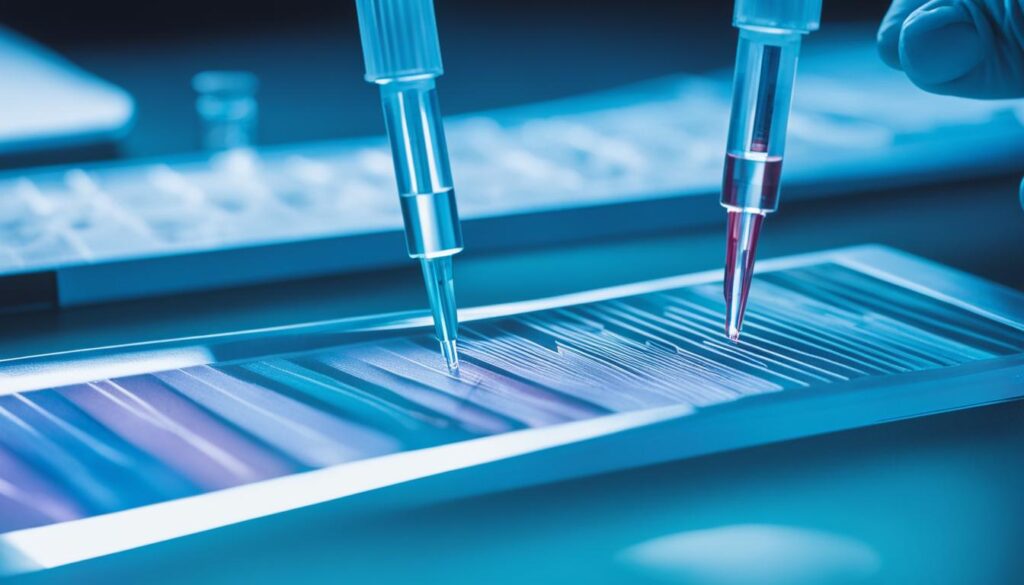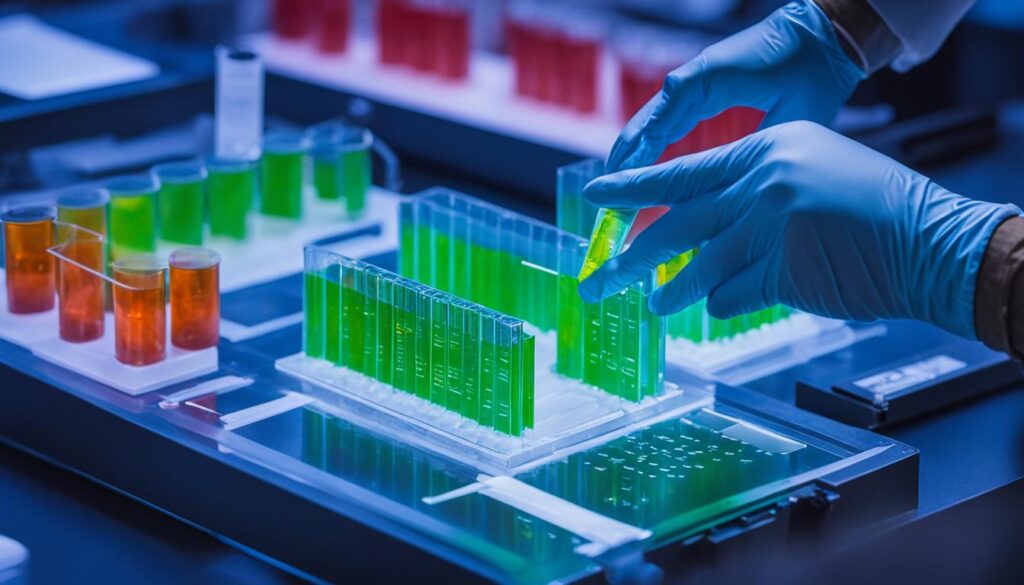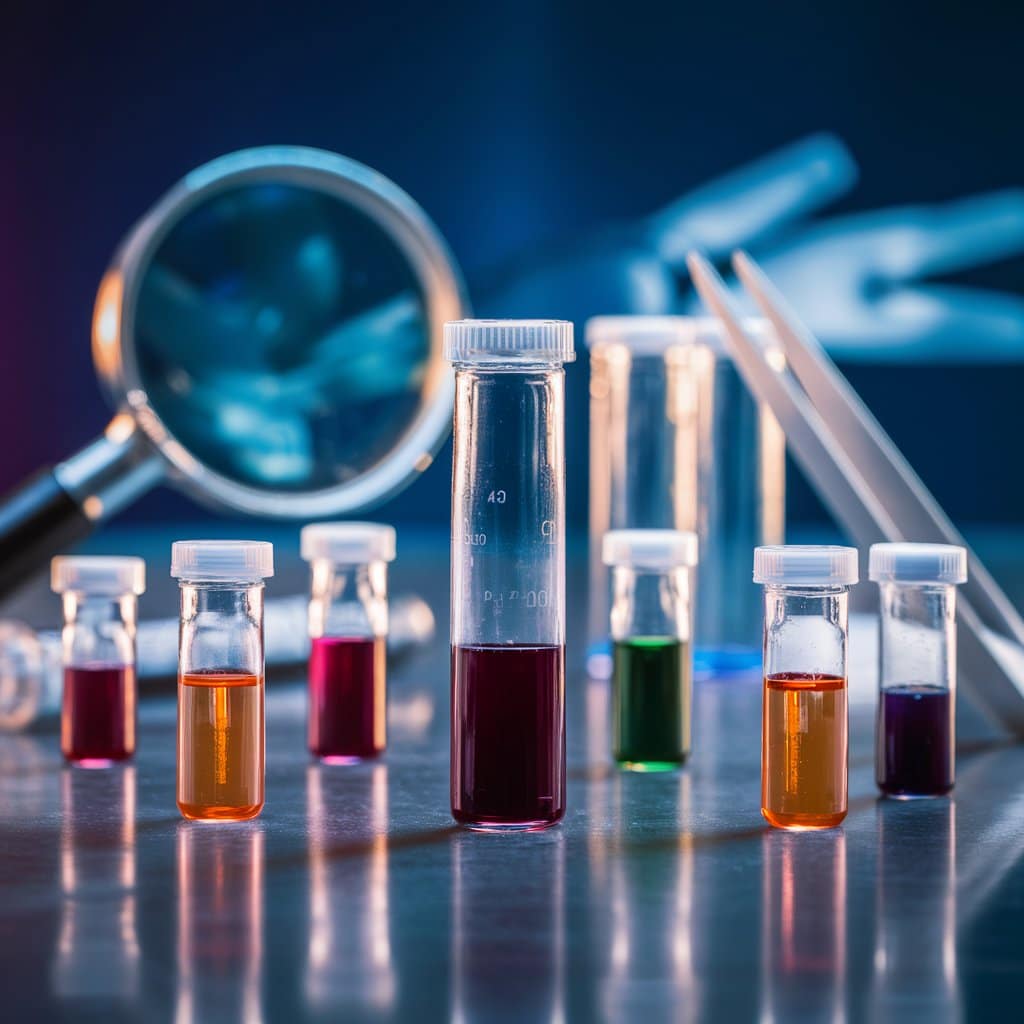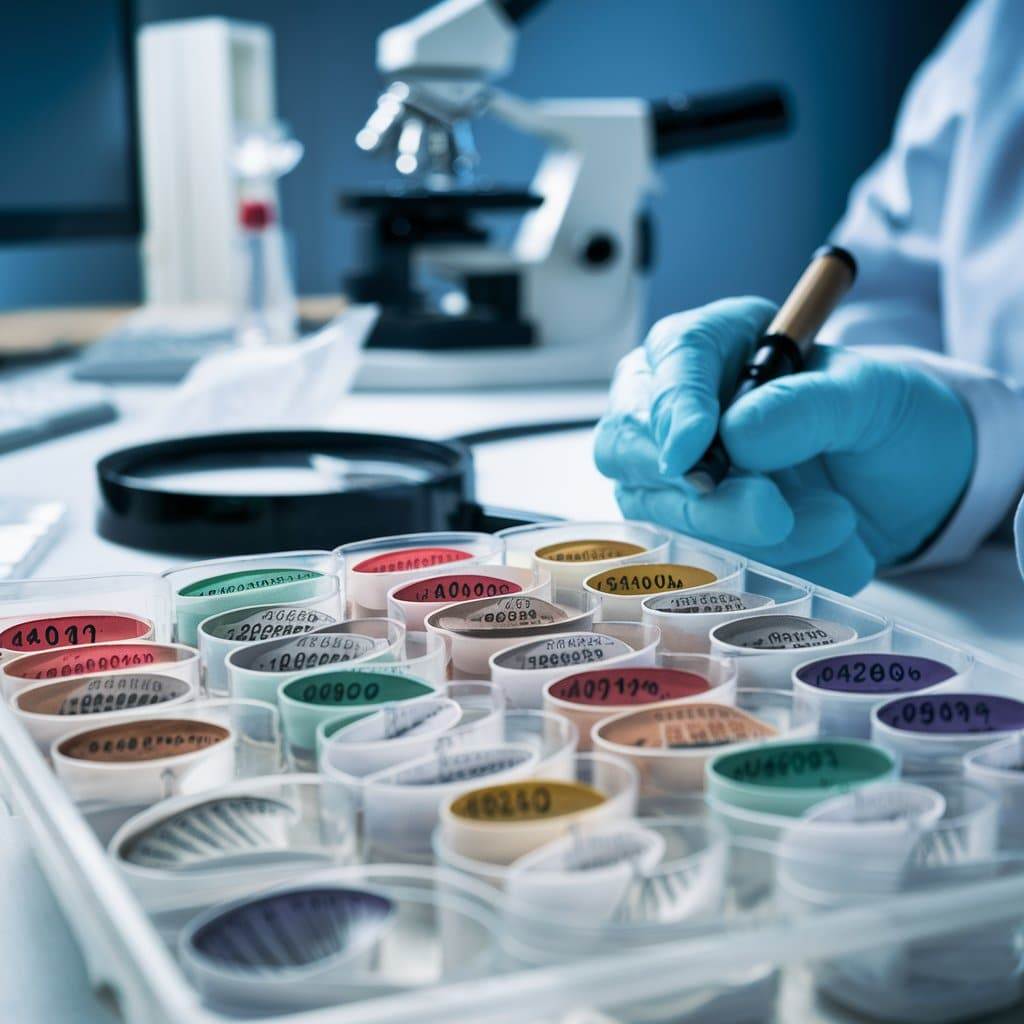Learn about the various types of forensic DNA used in analyzing genetic evidence and DNA profiling methods, including CODIS and DNA fingerprinting. Understand how forensic science leverages DNA analysis to solve crimes.
Overview of Forensic DNA Analysis
What is Forensic DNA?
Forensic DNA is using genetic material to help solve crimes. Scientists analyze samples like blood, hair, and saliva to figure out who was at a crime scene. This started in the 1980s and has been super helpful ever since. Genetics and biology are key in understanding how DNA evidence works. The National Institute of Justice has done a lot to push this technology forward.
Importance of Forensic DNA in Crime Solving
Forensic DNA is really important for solving crimes. It gives solid proof that can either confirm or deny a suspect’s involvement. At crime scenes, experts collect and analyze DNA to create profiles. These profiles are then checked against records in the CODIS database. This helps law enforcement solve cases faster and makes sure the criminal justice system stays fair.
How does DNA Profiling Work?
DNA profiling has several steps:
- Polymerase Chain Reaction (PCR): This technique makes lots of copies of a small amount of DNA.
- STR Analysis: Short Tandem Repeat (STR) analysis looks at specific parts of the DNA that vary between people.
- Y-Chromosome Analysis: This is used mainly for tracing paternal lineage.
- Mitochondrial Analysis: Useful when nuclear DNA isn’t available, often used for identifying remains.
Real-life examples include solving old cases where other methods didn’t work but new DNA techniques did.
Types of DNA Used in Forensics
Different types of biological sources like hair, blood, and saliva are used in forensic science. Environmental factors such as contamination and degradation can affect these samples. Also, lifestyle choices like smoking or drug use can impact the quality of collected DNA.
Steps in DNA Sample Processing
Collecting DNA Evidence
Collecting good-quality DNA evidence is crucial:
- Sources: Common sources include bloodstains, hair follicles, and saliva.
- Methods: Techniques like swabbing or cutting out sections from fabrics are used.
- Sample Integrity: Keeping samples clean involves wearing gloves and using sterile tools to avoid contamination.
DNA Extraction Techniques
Getting high-quality DNA from samples is essential:
- Overview: Methods include organic extraction, Chelex extraction, and solid-phase extraction.
- Challenges: Different samples have unique challenges; for example, bone fragments need more rigorous procedures than fresh blood samples.
Quantifying DNA Samples
Quantifying extracted DNA ensures there’s enough material for analysis:
- Importance: Accurate quantification avoids wasting resources on insufficient samples.
- Tools and Techniques: Spectrophotometry and fluorometry are commonly used methods.
Amplification Using PCR
What is Polymerase Chain Reaction (PCR)?
PCR is a technique that amplifies small amounts of genetic material:
- Applications: In forensic analysis, PCR helps scientists make millions of copies from a tiny sample so they can examine it in detail even when only small quantities are available.
By following these steps carefully, forensic experts ensure their findings are reliable and can be used confidently in courtrooms worldwide.

Types of DNA Evidence Analysis
Short Tandem Repeat (STR) Analysis
Short Tandem Repeat (STR) analysis is a key method in forensic DNA profiling. It focuses on regions in the DNA called short tandem repeats. These are sequences where a short pattern of nucleotides is repeated several times.
How STR Analysis Works
- Sample Collection: First, biological samples like blood, saliva, or hair are collected.
- DNA Extraction: The DNA is then extracted from these samples using chemicals.
- PCR Amplification: Polymerase Chain Reaction (PCR) amplifies the STR regions of the DNA.
- Electrophoresis: The amplified STR fragments are separated by size using gel electrophoresis.
- Analysis and Comparison: The pattern of STR alleles is analyzed and compared to known profiles for identification.
Compared to other methods like RFLP (Restriction Fragment Length Polymorphism), STR analysis needs less DNA and can be done quicker. It also gives highly accurate results because the STR regions vary greatly among individuals.
Y-Chromosome Analysis
Related Keywords: Y-Chromosome Analysis, Y-STR, Male DNA Fraction, Forensic Genetics, Genetic Identification
Y-Chromosome analysis looks at genetic markers found only on the Y-chromosome. This type of analysis is especially useful for identifying male-specific genetic material in mixed samples.
Unique Aspects and Applications
- Male Lineage Tracing: The Y-chromosome passes from father to son almost unchanged. This helps trace paternal lineage.
- Forensic Investigations: Useful in cases involving sexual assault where identifying male-specific genetic material is crucial.
Limitations and Challenges
- Limited Discrimination Power: Unlike autosomal markers used in STR analysis, Y-STR markers have lower discrimination power because all males in a paternal line share the same Y-STR profile.
- Population Substructure Effects: Variability among different populations can affect results.
Mitochondrial DNA Analysis
Related Keywords: Mitochondrial DNA Analysis, mtDNA, Forensic Biology, Human Cell DNA
Mitochondrial DNA (mtDNA) analysis examines genetic material found in mitochondria rather than the nucleus of cells. This method is especially useful when nuclear DNA is degraded or unavailable.
Benefits in Forensic Cases
- Maternal Lineage Tracing: mtDNA is maternally inherited and can trace maternal ancestry.
- Degraded Samples: Effective for analyzing old or degraded samples such as bones or hair shafts where nuclear DNA might not be intact.
Introduction to CODIS
The Combined DNA Index System (CODIS) is a national database managed by the FBI that stores profiles from convicted offenders and crime scene evidence.
Structure and Purpose
CODIS consists of three levels:
- Local level: Managed by local laboratories.
- State level: Aggregates data from local labs within a state.
- National level: Centralized database managed by the FBI.
By comparing new evidence against stored profiles, CODIS helps solve crimes by identifying suspects or linking serial offenses.
Global DNA Databanks
International cooperation plays a critical role in forensic genetics through global databases like Interpol’s database which facilitates cross-border crime-solving efforts.
Key International Databases
- Interpol Database: Shares information across member countries aiding international criminal investigations.
- European Network of Forensic Science Institutes (ENFSI): Promotes standardization and collaboration among European countries’ forensic labs.
These databanks enhance global security by enabling law enforcement agencies worldwide to share crucial forensic data efficiently.
Privacy and Ethical Concerns
The use of forensic genetics raises significant ethical concerns regarding privacy rights versus public safety needs:
Balancing Public Safety with Privacy Rights
While databases like CODIS help solve crimes effectively:
- They pose risks related to misuse or unauthorized access to genetic information.
- There are ongoing debates on expanding databases beyond convicted offenders to include arrestees or even general populations without compromising individual privacy rights.
Current regulations vary widely across jurisdictions but generally aim at ensuring that genetic data handling respects individuals’ privacy while serving justice effectively.

Advancements in Forensic DNA Technology
Recent advancements in forensic DNA technology have brought new methods and tools that improve the accuracy and efficiency of DNA analysis.
Next-Generation Sequencing (NGS):
This method allows for more comprehensive analysis by sequencing entire genomes quickly and accurately.
Touch DNA Analysis:
This technique enables investigators to get usable DNA profiles from very small or degraded samples, like skin cells left on an object.
Rapid DNA Technology:
Rapid DNA instruments can generate a profile within hours, speeding up investigations significantly.
These advancements not only improve current practices but also pave the way for future innovations in forensic science.
Future of DNA Profiling
The future of DNA profiling holds exciting possibilities as new technologies emerge and existing methods improve.
Upcoming Technologies:
Portable sequencing devices could allow for on-site analysis at crime scenes, reducing processing times dramatically.
Future Challenges:
Despite these advances, challenges remain. Issues like privacy concerns, ethical considerations around genetic data usage, and potential biases in databases need addressing.
Opportunities:
The integration of AI with forensic tools could lead to more accurate predictions and analyses, further enhancing investigative capabilities.
As we look ahead, it’s clear that continuous innovation will shape the future landscape of forensic science, offering both challenges and opportunities for practitioners.

The Statistical Strength of DNA Evidence
Understanding a 13-STR Profile
A 13-STR Profile is a key tool in forensic DNA analysis. It uses 13 specific Short Tandem Repeat (STR) markers to create a unique genetic profile. These STR markers are parts of the DNA where short sequences of base pairs repeat. Each person has different numbers of repeats at these loci, making the 13-STR Profile highly individualistic.
In crime scene investigations, forensic experts collect DNA samples and analyze these STR markers. By comparing the STR profiles from crime scene evidence to those of potential suspects, they can determine matches with high accuracy. This process involves probability calculations in DNA profiling, which assess the likelihood that two profiles match by chance.
Making an STR Match
Making an STR Match involves comparing the genetic identification markers from a suspect’s DNA with those found at a crime scene. The process starts with forensic DNA analysis, where scientists extract and amplify the DNA using polymerase chain reaction (PCR). They then compare the specific loci to see if they align.
The match probability is calculated to understand how likely it is that two individuals could have identical profiles by random chance. This is known as random match probability. A low random match probability indicates a strong likelihood that the samples come from the same person.
For example:
- Genotype: The genetic makeup at each locus.
- Match Probability: The statistical likelihood that another person would have the same genotype at all tested loci.
Confounding Circumstances in DNA Profiling
DNA profiling isn’t always straightforward due to various confounding circumstances:
- Degraded Evidence: Over time, environmental factors can degrade DNA samples, making them harder to analyze accurately.
- Partial Profiles: Sometimes, only partial profiles are available due to limited or damaged samples.
- Contamination Issues: Samples can be contaminated by external sources during collection or analysis, leading to inaccurate results.
These challenges require careful handling and interpretation by forensic experts to ensure accurate conclusions.
Partial Profiles and Their Impact
Partial profiles occur when only some of the STR markers are available for analysis. This situation often arises when dealing with degraded or limited samples in forensic investigations.
Incomplete data interpretation in forensics requires sophisticated techniques:
- Forensic analysts use statistical models to estimate how likely it is that partial profiles match.
- They must consider all possible genetic variations and calculate probabilities accordingly.
While partial profiles can still provide valuable information, they generally offer less certainty than complete profiles. Accurate interpretation is crucial for maintaining confidence in forensic conclusions.
By understanding these aspects of forensic DNA analysis—13-STR Profiles, making matches, confounding circumstances, and partial profiles—we gain insight into how this powerful tool helps solve crimes while recognizing its limitations and complexities.

